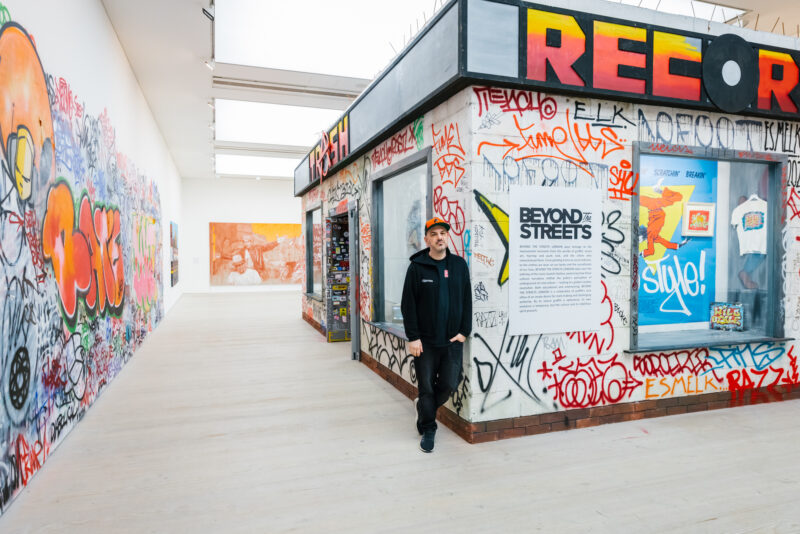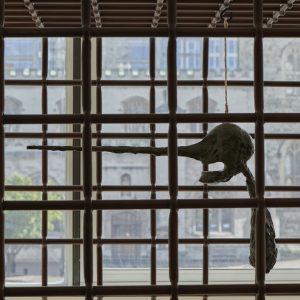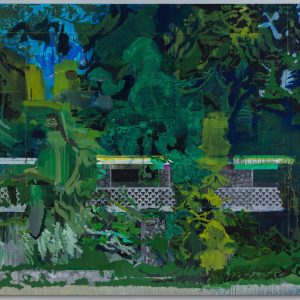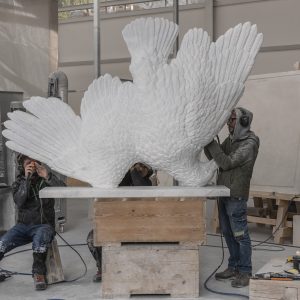FAILE, AKA Brooklyn-based artist duo Patrick McNeil and Patrick Miller, speak to Lee Sharrock about their latest exhibition Don’t Stop at CONTROL Gallery in Los Angeles.
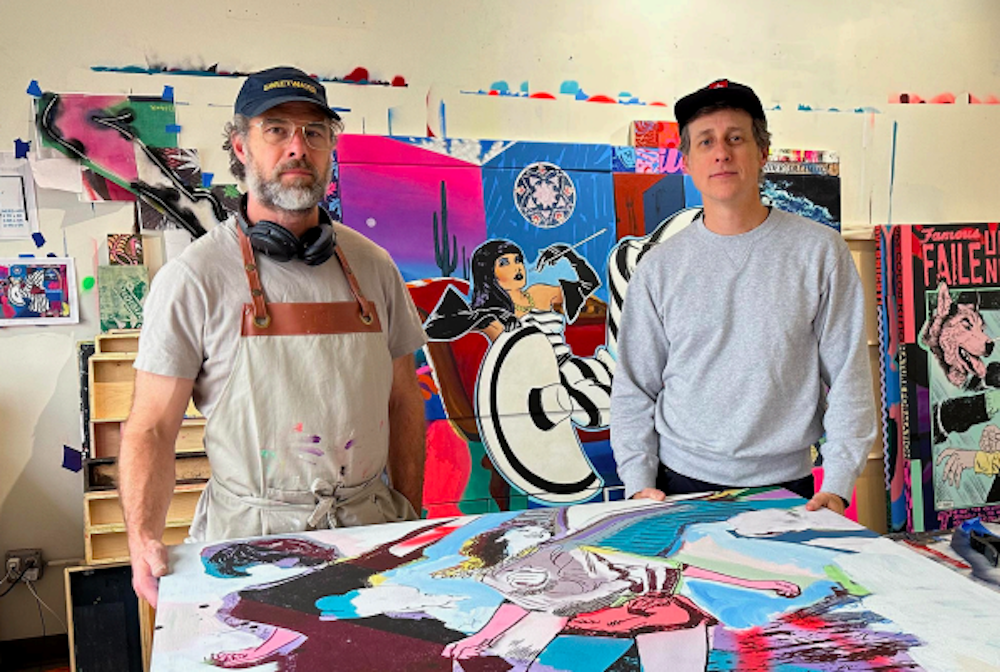
McNeil and Miller have been friends since the age of 14, forming FAILE in 1999 and coming up with their artist Moniker by rearranging the title of their first project ‘A Life’. Now recognised as pioneers of the urban art movement, the duo is known for a multi-disciplinary approach which takes inspiration from pop culture, architecture, art history, mass media and contemporary issues such as climate change and the digital age.
FAILE’s work has been exhibited all over the world in exhibitions and public installations, including; TATE Modern; the Pera Museum in Istanbul; Strasbourg Museum of Modern and Contemporary Art; Art Science Museum, Singapore; Central Academy of Fine Art Museum, Beijing; Times Square, New York City; Brooklyn Museum; and the Museum of Contemporary Art, San Diego.
With Don’t Stop at CONTROL Gallery, FAILE explore the creative process through printmaking and collage, and present their visual universe as a ‘narrative collage’ inspired by the city as a muse. Don’t Stop is the artist’s reflection on the fast-paced digital world and the eternal muse that is FAILE’s home – New York City.
Lee Sharrock spoke to FAILE for FAD Magazine.
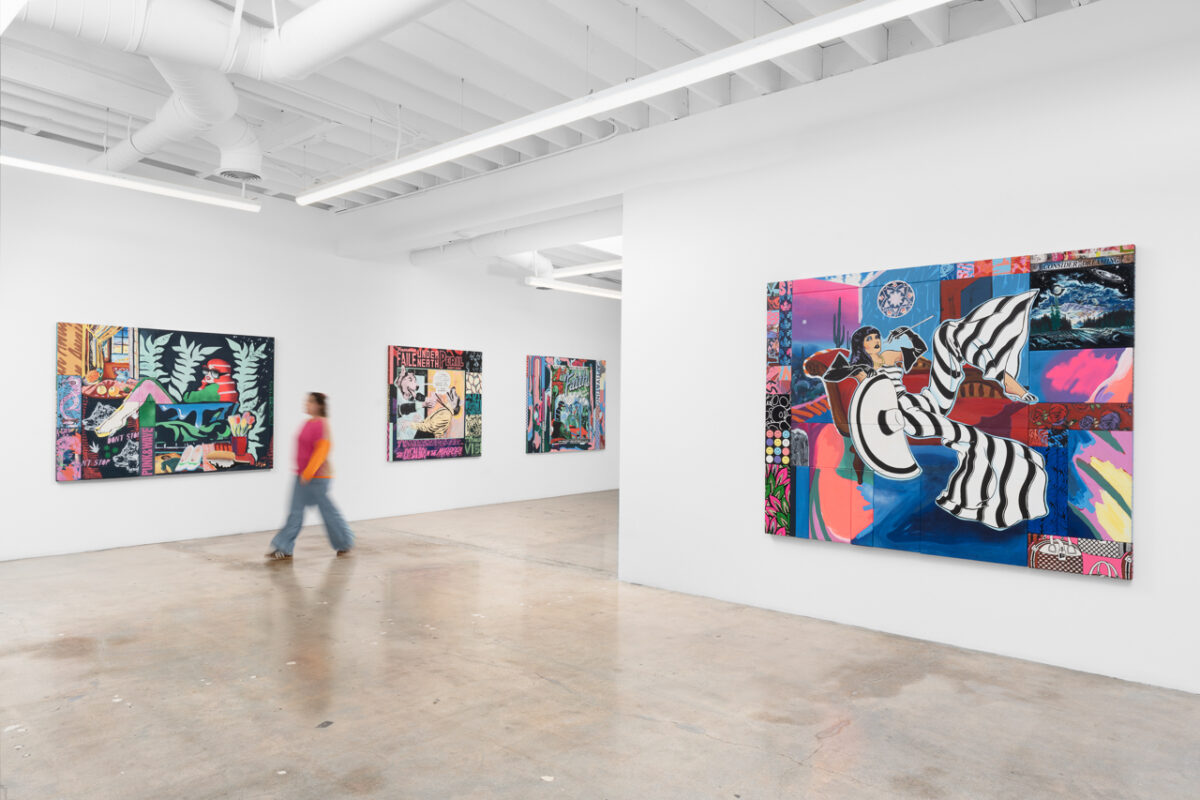
Lee Sharrock: Would you say the art in this new exhibition at Control Gallery is a comment on today’s well-documented unhealthy infatuation with the superficial world of social media, and the relentless 24 hr cycle of information?
FAILE: Some of the work in the show is definitely speaking to that notion. Don’t Stop is very much about the relationship between desire and nourishment, between the input and output, which we find is a constant cycle. It’s not necessarily unhealthy, it’s just more of a dance you’re engaged in. Just like living in a fast-paced city where your level of input is very high, you have to learn how to process that and release it. Learn how to ride that wave. There is very much a sense of the beast it can create that always needs to be fed. That thin line is something we were interested in exploring in this show.
Where did the exhibition’s title Don’t Stop come from?
The title is about drive, really. A reflection of the continued motivation that comes from finding inspiration all around you and the desire to make meaning from it, along with a sense of endlessly chasing a feeling of progress. Ideally, while remaining hopeful that there are new vistas to be found ahead. The lesson from it is probably more rooted in recognizing the energy that propels the journey versus the illusion of destination.

Don’t Stop features artworks in various forms of media, ranging from paintings, works on paper and work on wood, and you use acrylics, fabric and spray paint. What’s the starting point for each piece, and how do you decide what medium to use?
Printmaking is the cornerstone of our practice, something that we relate to making work for the street and the studio from our earliest days. Most of our works starts as black and white imagery as a reflection of making work for silkscreen printing. That underlying image can be translated in several directions from being hand-painted, to embroidered to stencilled and so forth. We believe it’s the core of our image-making practice that is the starting point, and then it’s just deciding what medium will make the piece come to life as we desire.
Where do you draw your inspiration from?
New York City is a constant source of inspiration, we write of it as our muse. The entire mix that you find just walking down the street. That being said, it really comes from all over. We collect a lot of old magazines, zines, printed ephemera, screen grabs. There’s a commercial language that’s always spoken to us. Maybe that’s growing up in the 80’s when the laws changed around marketing to kids or maybe it’s just that it was a rich time of so many new technologies coming to market with a visual language to match. Much of it is trying to tell stories that can help make sense of our time and our experience. We try to incorporate the soft fuzziness and the hard edges of life in front cover like formats. Since we all inevitably relate the book to the cover.

How did you originally start working together, and what is your creative process as an artistic partnership?
We’ve known each other since we were 14. We’ve always shared art and the practice of making art as a backdrop to life. We’re good at different things and different ways of thinking and making. That has served us well as we can take on a variety of projects and bring elements to our work that reflects unique directions. We sort of bat things back and forth between image-making, how we execute work and the process of refinement. When something is “done” we’ve almost always had a mutual feeling towards its completion which makes it “us”.
What is it specifically about the dynamic motion of city’s that defines your narrative?
It’s an idea of gestalt, I believe. It’s understanding how a series of individual pieces that are all unique in their own right can come together to make a greater whole. Much like our collaboration, or the small pieces we weave together to make our images and paintings. It’s that idea that the whole is greater than the sum of its parts. We feed off that.
How important would you say the surfaces you work with are in expressing a narrative through your artistic practice?
In thinking of surface being paper, canvas or a stone wall, there’s a sense of immediacy that informs the work. Then there’s a sense of history that informs that work if a given surface has a rich patina to it. That sense of time and history is an important part in how we celebrate surface and chose to work with it. Often that surface is something we’re creating to work over, other times its existing as a collaborator.
New York in the late 70’s and 80’s saw an explosion of graffiti in its purest form, that made the city a canvas for artists and became an international movement. Do you think that contemporary ‘Street Art’ has the same significance and importance in today’s technology-obsessed climate as it did in the early days of the art form?
I think there were a few waves from the 70’s/80’s to the 90’s/00’s that were both incredibly explosive to the genre and both unique from each other. As these genres reached into the 10’s/20’s there was something lost in the intimacy of the work as it became bigger and bigger and the audience shifted into more digital interfaces. But that’s sort of the game. Time’s change, the way one finds new avenues to “get up” and make their name known is symbiotic to the surfaces of their time. At the moment that is largely captured and shared in a digital space so artists have to find a way to speak to that audience. As it changes so quickly, I don’t know that we’ve really seen the birth of a new genre to speak to this.
Do you think AI is having a detrimental effect on art considering it’s based on algorithms that create images, rather than technique or skill which have become null and void when using AI?
Like above, art is about the tools and surfaces of it’s time. AI is just a part of that. It’s all how it’s used in the hands of the artist. I just don’t think we’ve seen the innovation there yet from artists to use this tool as a meaningful form of art yet. Much of what exists with AI feels redundant. Either way, art is a reflection of it’s time. It’s creation and commentary are a part of that. I’m excited to see what comes of it, I don’t have such a pessimistic view on its current state or its potential.
Does technology play a role in creating your work?
Yes, in that we are often inspired by culture and technology is currently central to that. Additionally, we’ve experimented with AI software and have found some value in its place in the creative process. Our work is about incorporation and making sense of a variety of sources. AI isn’t really a new source as it’s more of an advanced aggregate of many sources but it’s interesting to test our inputs with its outputs. The art is ultimately in the decision of how to use that.
In what way do the ‘craft arts’ and the principles of quilt making influence your work?
Mostly that quilt making has historically tried to incorporate a variety of elements, fabrics in this case, old and new, and create a structure for them which hopefully creates beauty from the resulting form.
You’re based in New York and the exhibition is in LA. How do you think the contemporary and street art scene compare between the West Coast and East Coast?
The contemporary art scene in LA has exploded over the last 10 years. Often times I will see new shows opening from artists I like and lament the fact that they are opening in LA versus NYC. Which is great for all forms of art.
As for the street art scene it’s become so morphed into murals, collabs and other contemporary avenues that I don’t really feel like I notice that as much any more directly on the street. The graffiti scene on the other hand, with the towers that were recently painted are quite extraordinary. That would seem unimaginable in NYC. Something is happening in LA that speaks to the state of LA at this moment. I’m not quite sure what that is but it will be really interesting to watch its evolution and the art that’s created from it.
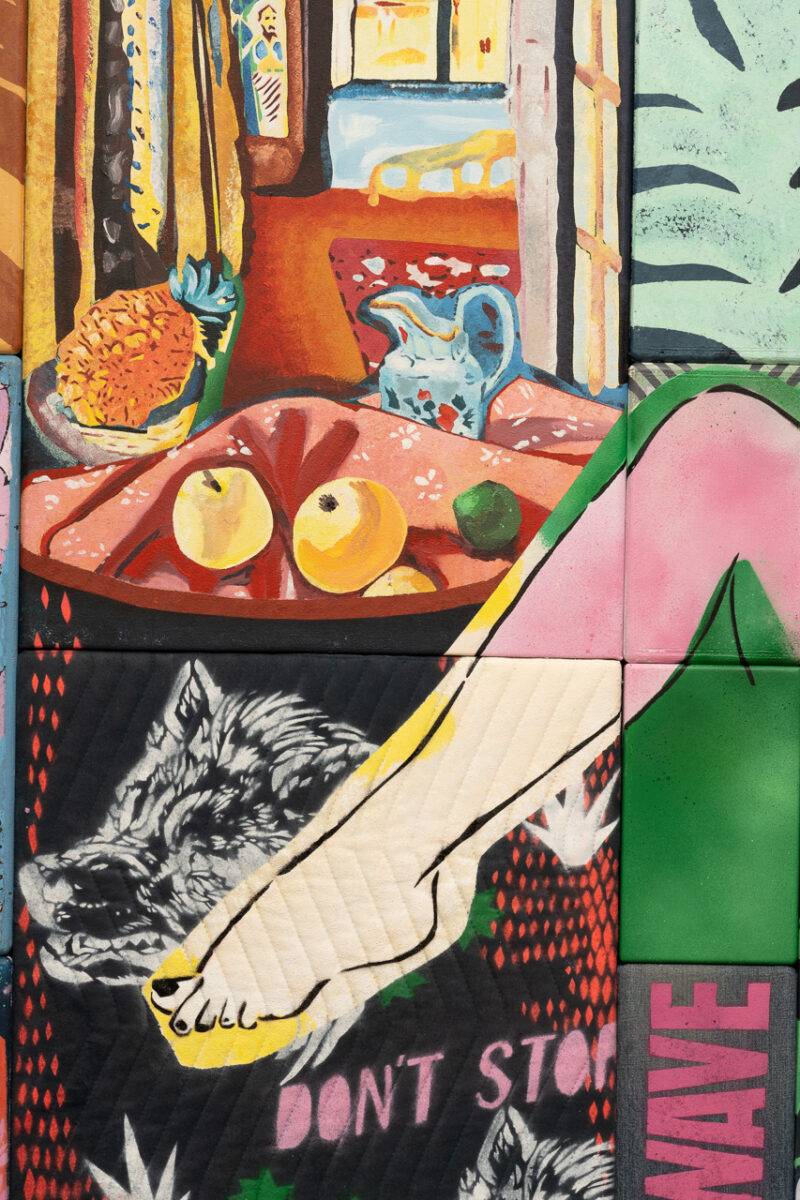
FAILE: Don’t Stop – 15th June 2024, CONTROL Gallery

